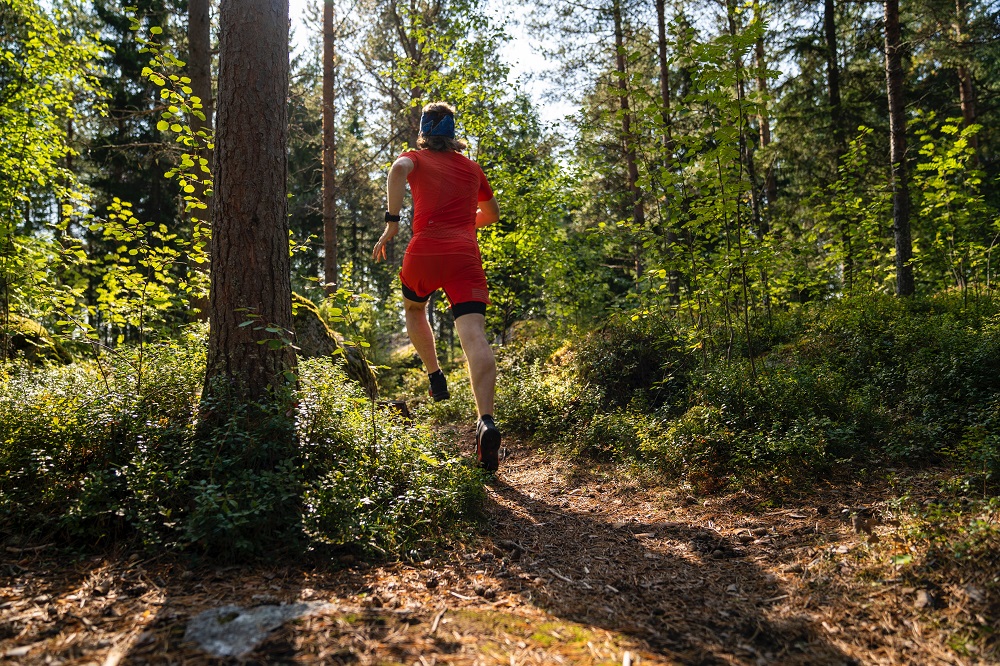
What is trail running?
Trail running is any running which doesn’t involve running on the pavements and roads. Typically, it involves running through countryside, on sand, grass and paths. It is considered a lot more technical due to the changing terrain and surfaces and many people find trail running more exciting than regular running that can sometimes be more monotonous.
How to start trail running
When trail running there are a couple of things you need to consider.
1. Find a good route
Obviously the first thing you need to consider is where you are going to run. Are there any trails near you or do you need to travel a little further afield? There are lots of great tools you can use to try and find a good trail running route – discovering new places to run is definitely one of the benefits. Looking at maps or using sites such as Map My Run or AllTrails will help throw up some good routes, you could also check out where people have been running locally on Strava too.
2. Think about footwear
As you’ll be encountering different terrain, with some of the ground perhaps being loose, slippery or muddy, it is essential that you find a good trail shoe with a good tread. If you’re unsure of where to start, the experts at your local Runners Need store will be able to advise you on what sort of shoe to look for depending on the types of terrain you’ll be running on. There is a wide variety of shoes from those that are created with specific terrain in mind to others which perform as an all-rounder. While you’re there, you could also try out our free gait analysis service to find out more about your running form and get the best shoe for your needs.
3. Nutrition and hydration
Trails are often very remote, so if you’re headed out, particularly for a long run, it is important that you’ve got enough fluids to keep you hydrated and food to keep you fuelled. Specific fuel amounts vary from runner to runner based on their weight, build and speed but as a general rule try to carry around 250ml for every 20-30 minutes of running. Also aim to keep fuelling every 30-45 minutes too. The great thing about trail running is that it can often feel like a bit of a picnic and you can take on your fuel while walking up hills to help preserve your energy.
4. Staying safe
As you won’t be running in areas that are easily accessible, it is vital that you stay as safe as you can. Let someone know where you’re going and how long you’re roughly going to be, take a map or GPS device with you in case you find yourself off route and always try to take a fully charged phone too, so you can call for help if you need it. A headtorch is also a good idea in case visibility is low.
5. Adapt your training
Incorporating hill sessions and strength and conditioning exercises into your training plan will help you become a better trail runner. Hill sessions help you prepare for those inevitable inclines while building up your strength in areas such as the ankles can help support you as you run and minimise your risk of injury.
6. Think about kit
As well as a good pair of trail shoes, having specialist kit – particularly for longer runs in the wilderness – is a good idea. As a beginner this may not be something you want to invest in straight away, but if you’re going to be going on regular trail runs kit such as hydration running vests which enable you to comfortable carry your water and snacks with you are a no brainer. Carrying an extra layer of clothing or a lightweight wind breaker can also be useful, especially if you’re running somewhere hilly and may find yourself exposed to windy and chillier conditions.
7. Find a group
If you’re nervous about heading out on your own, why not see if there is a local trail running group you can join? Not only is it a safer option, but it is a great way to learn new tips, technique and make new friends.
8. Remember its not about speed
Trail running is different to regular running in that it isn’t about how fast you go, it’s about enjoying your run. As the terrain is often more technical and challenging there is no harm in slowing down to avoid twisting an ankle or tripping over a log.
9. Focus on your form
As trail running is so different to running on the road, it is important to look at your form:
- When running uphill you will want to lean forward slightly so your weight is on the balls of your feet.
- When running downhill try to look at least 10-15 feet ahead to help you pick a good line.
- Keep steps light and short rather than opt for long strides, as this is more efficient.
- Exaggerating your arm swing can help with your balance and keep your momentum going








